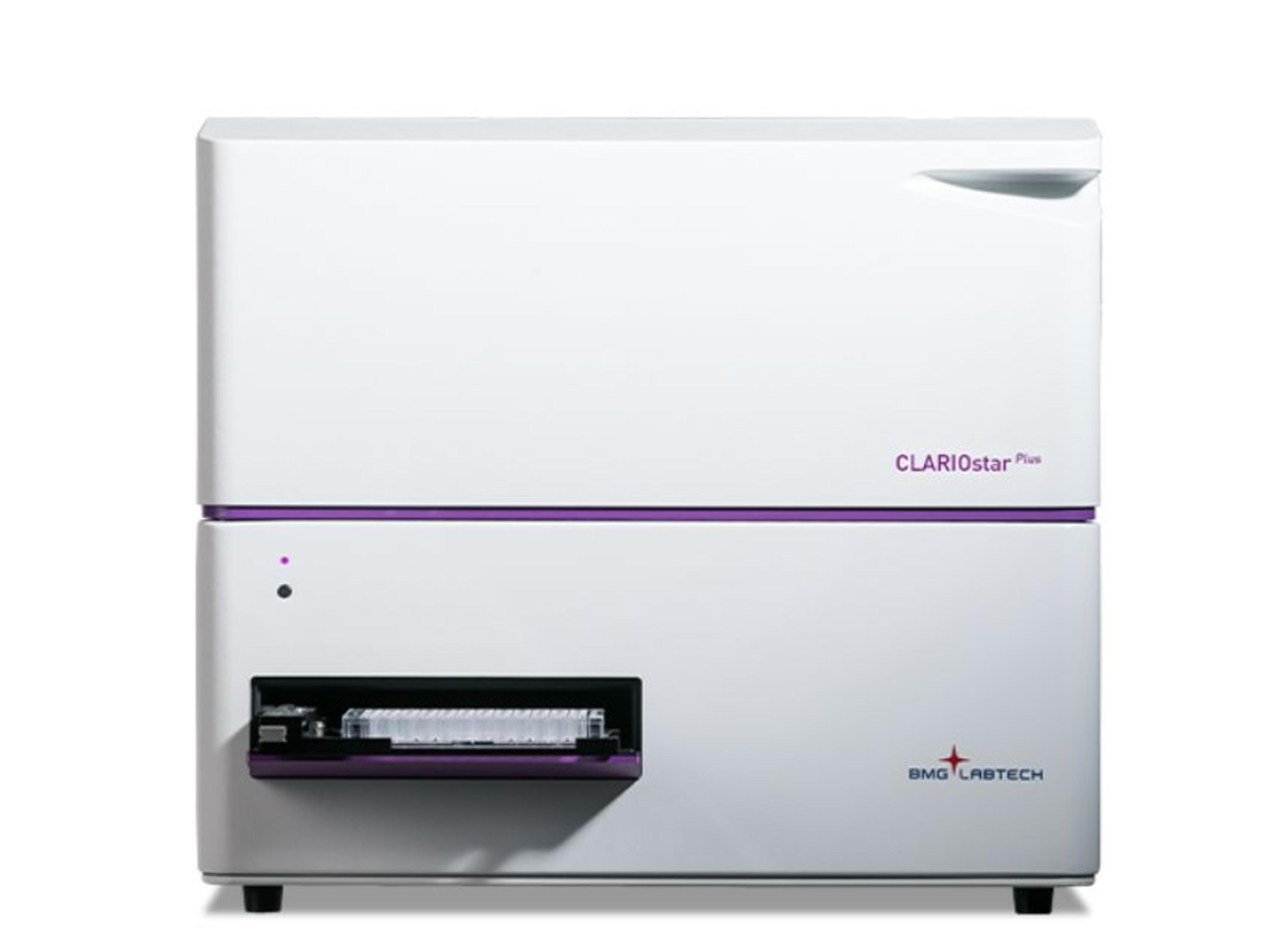How to Meet Assay Development Demands
Introducing BMG LABTECH’s new microplate reader and troubleshooting tips to help you improve assay development and save vital time
11 Mar 2019
With researchers looking to save time during assay development, automation is key. When establishing an assay, it is difficult to know the dynamic window required for measurement set-up and can require several experiments. This has been a driving factor in the development of BMG LABTECH’s new Enhanced Dynamic Range technology, incorporated in the new CLARIOstar® Plus multimode microplate reader.

Here, SelectScience speaks to applications specialist Andrea Krumm to learn about BMG LABTECH ’s new microplate reader, the CLARIOstar Plus, and to find out her top three tips for improving assay development process.
Tell us a little about the new CLARIOstar Plus microplate reader.
The CLARIOstar Plus is a highly sensitive and flexible microplate reader. It measures not only fluorescent, absorbance and luminescent assays with ease, it also measures advanced fluorescent assays based on time-resolved fluorescence, time-resolved FRET and fluorescence polarization or luminescent assays, such as AlphaScreen and AlphaLisa.
The CLARIOstar Plus, like its predecessor, the CLARIOstar, is equipped with the Linear Variable Filter (LVF) Monochromator that allows the user to choose any wavelengths and bandwidths while providing filter-like performance. The CLARIOstar Plus also features BMG LABTECH's unique atmospheric control unit (ACU) that allows active regulation of both O2 and CO2 as well as gas ramps, important functions for cell experiments and ischemia/reperfusion experiments.
The CLARIOstar Plus comes with new features that improve flexibility and usability. Enhanced Dynamic Range (EDR) technology and rapid full-plate autofocus automatically identify the best measurement settings. Since optimization measurements are no longer necessary, these novel features reduce pressure on researchers as the reader automatically identifies the best possible setup. Additionally, dedicated detectors (photomultiplier tubes) ensure the best performance for each assay.
For users running luminescence and Alpha Technology assays, we improved performance and data robustness by further reducing cross-talk. Cross-talk happens when the light signal of a well is picked up while measuring a neighbouring well. It is mainly affected by the quality of the microplate and the geometry of detection. The CLARIOstar Plus comes with new features able to reduce both factors to a minimum and improve luminescence readings.
How will the CLARIOstar Plus benefit assay development and multiplexing applications?
EDR technology eliminates detector saturation in fluorescent and luminescent assays. This is specifically useful when you don’t know the dynamic window of your assay – in particular, when developing new assays or running enzymatic or cell-based kinetics. The CLARIOstar Plus reliably measures with 8 decades of dynamic range – from femto- to micro-molar in just one run – so there is no need for a second measurement. Furthermore, it automatically and quickly finds the optimal Z-height for detection, while MARS analysis software automatically calculates assay quality indicators for quick assay evaluation.
Users measuring both luminescent and fluorescent assays will also greatly benefit from dedicated detectors. Luminescence profits from a low-noise detector, whereas a red-sensitive detector for fluorescence guarantees highest sensitivity for fluorophores across the spectral range, explicitly including red-shifted dyes. These are increasingly used for cell-based assays and the parallel measurement of several assays (multiplexing).

What inspired the development of the CLARIOstar Plus?
There are two reasons that led to the development of the CLARIOstar Plus: on the one hand, it is of course our customers, who are increasingly interested in dyes emitting in the red, so we wanted to provide a perfect and complete solution to them. Furthermore, when we visit customers in their labs, we see that time pressure is increasing. The intuitive handling reduces the time a researcher needs to produce reliable results.
On the other hand, there is a trend towards multiplexing – getting as many data points as possible out of a sample. We know how much data can be derived from a single well in a microplate when combining three or four assays, for instance. By offering dedicated detectors for different detection modes and the possibility to use the complete light spectrum, we would love to animate and inspire our customers to multiplex in order to get more out of their samples. We hope this will be our little contribution to make lab work a bit more effortless.
What do you see for the future of the CLARIOstar Plus?
First of all, I see the CLARIOstar Plus as the go-to assay development plate reader in life science laboratories, biotechs, even in CROs and pharma around the globe. It will assist researchers in better understanding lifestyle and infectious diseases, and will find solutions for environmental problems such as biofuel or plastic-degrading organisms. Who knows where the journey ends? I am sure we will be surprised by the findings that will be made with the CLARIOstar Plus.

What three tips would you give to help researchers improve assay development?
- Use appropriate controls: they tell you in which range your assay properly works, if your analytic instrument is working, and may also identify false positives. A positive control resulting in the maximum value and a negative control lacking only the analyte (not only a PBS or water blank!) already help a lot in interpreting assay results.
- Determine optimal instrument settings: quite often users underestimate the effect of using non-optimal detection settings on the quality of their data. The CLARIOstar Plus determines them automatically. Furthermore, BMG LABTECH provides optimized settings for a plethora of assays that are already included in the reader software. Alternatively, you can contact us. Our application support team is happy to explain all settings and their effects to you and to suggest optimal settings for your specific assay.
- Calculate assay quality parameters: there is a reason why high-throughput screeners rely on these. If you know how stable your data is (%CV or standard deviation) and how far it is separated (ratio of signal to negative control – S/N), the evaluation of how an assay parameter influences assay quality is easy. As the Z’ factor is based on both data stability and distance, it is just as popular to calculate it during assay development. Of course, you can also leave this job to BMG LABTECHs analysis software MARS.
Learn more about the latest microplate readers on the market in our 2019 eBook: How to Buy Microplate Readers.

